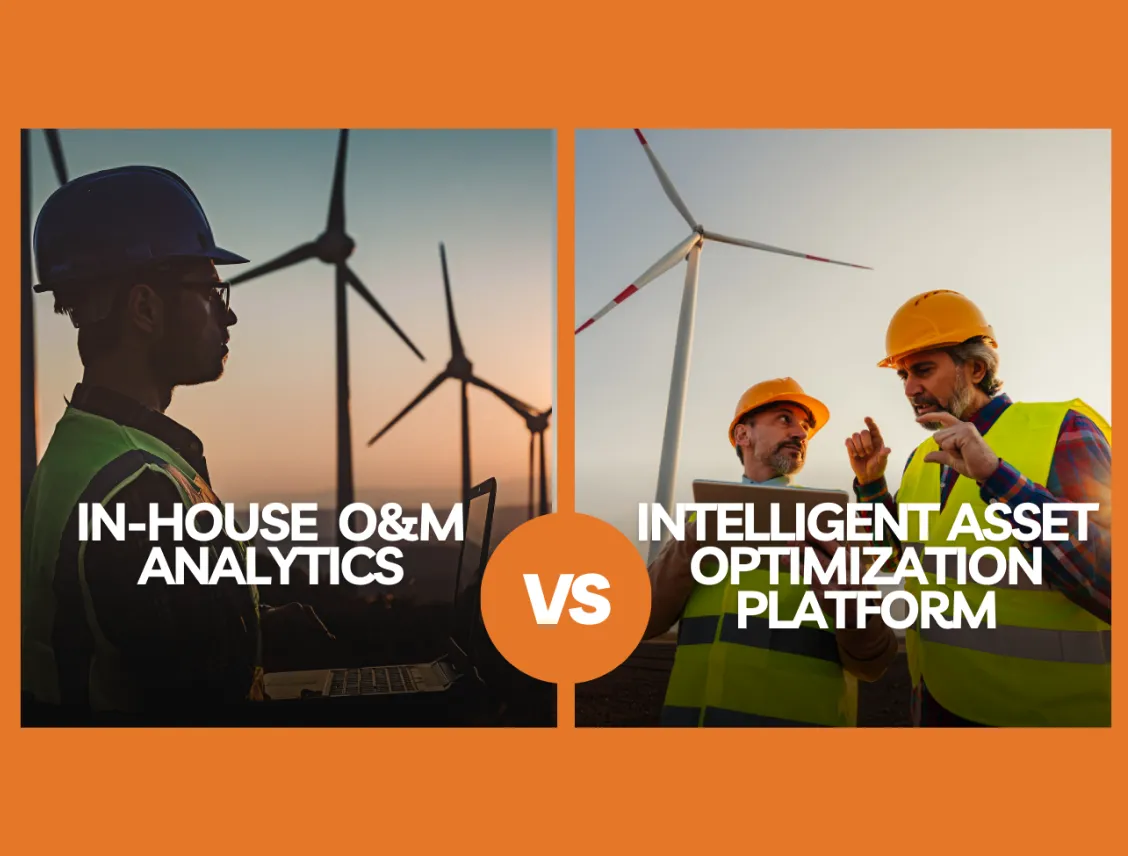
As the renewable energy sector races toward scale, many Independent Power Producers (IPPs) and asset managers find themselves at a crossroads: should they continue building in-house O&M analytics systems or shift toward specialized external platforms?
On the surface, in-house analytics offer control, customization, and cost-efficiency. But in practice? The hidden costs—technical, operational, and strategic—are eroding performance margins and holding back growth.
Energy Assets Are Growing, and So Is the Complexity
According to IRENA, the global renewable energy industry added 510 GW of capacity in 2023 — a 50% jump from 2022 and the fastest growth rate in over two decades. As portfolios scale, so does operational complexity. The average IPP today manages:
- Multi-GW portfolios across multiple states or countries
- A mix of solar, wind, storage, and hybrid assets
- Equipment from multiple OEMs with incompatible data protocols
- Disparate SCADA systems, often custom-configured
In this context, analytics is no longer a “nice-to-have” layer. It is the central nervous system of operations—guiding everything from reactive maintenance to strategic decisions around repowering, retrofits, and bidding in power markets. Yet, most in-house systems were not built to keep up with this scale, speed, or diversity.

In-House Systems Are Reaching a Performance Ceiling
Despite best intentions, most internal O&M analytics platforms run into predictable roadblocks. Here are four recurring limitations:
- Fragmented View Across Assets: Every OEM comes with its own proprietary logic, data formats, and thresholds. In-house platforms often struggle to normalize data across different asset types—especially when integrating newer plants or replacing OEMs during upgrades.
Result: Operators have visibility, but not comparability, consistency and standardization across the portfolio.
- Engineering Teams as Software Teams: Internal tools require ongoing maintenance—bug fixes, data pipeline adjustments, dashboard upkeep. Instead of spending time on optimization and forecasting, internal engineers often become de facto data wranglers.
Result: High-value talent gets stuck solving low-leverage problems.
- No Predictive Intelligence: Internal tools often stop at descriptive dashboards—what happened, not why. Without machine learning models trained on large, diverse datasets, in-house solutions fail to predict component degradation or early signs of failure.
Result: Maintenance remains reactive rather than preventive or predictive.
- No ROI or Roadmap Visibility: In-house tools lack the benchmarking, alerting, and automated reporting capabilities needed to justify decisions to management or investors. There’s no way to measure what uptime improvements are linked to analytics-driven interventions.
Result: No data-backed value articulation to stakeholders.
In-House Systems Cost More Than You Think
Here’s what the data tells us:
- 28% higher than planned: O&M costs for utility-scale solar are frequently underbudgeted, and internal tools don’t account for hidden corrective maintenance needs (Origis Energy, 2023).
- 50% of future O&M spend: Expected to be spent on reactive repairs like inverter replacement over the next decade due to delayed diagnostics (Solar Builder Mag, 2023).
- 40% of downtime causes remain unidentified when relying only on basic SCADA or manually interpreted data (DOE FEMP).
These figures aren’t just technical challenges—they directly impact revenue realization, capacity factors, and investor trust.

Apollo Energy Analytics – Built for Intelligence, Not Just Visualization
Apollo Energy Analytics
addresses the very shortcomings that plague in-house analytics platforms. Built by industry veterans and machine learning experts, Apollo is an OEM-agnostic, predictive intelligence platform tailored for utility-scale solar, wind, and hybrid assets.
Here’s how Apollo redefines O&M analytics:
- 1. Unified Data Across OEMs: Apollo ingests data from SCADA, weather stations, string monitoring, and inverter APIs—irrespective of OEM. It maps and normalizes this data into a single operational model, offering clean comparisons across assets.
- Enables root-cause analysis across systems
- Offers consistent KPIs across solar, wind, and hybrid plants
- Eliminates manual data cleaning and reporting dependencies
- Predictive Analytics Engine: Apollo’s machine learning models predict potential component failures (e.g., inverter tripping, string faults) 7–14 days in advance. These alerts are actionable, prioritized, and contextual—reducing corrective maintenance costs.
- Custom thresholds based on plant history and operating conditions
- AI-driven fault detection and anomaly clustering
- Recommendations for pre-emptive action, not just alerts
- Recommendations for pre-emptive action, not just alerts: Apollo offers automated reporting dashboards tailored for technicians, O&M heads, and CXOs. These include:
- Real-time health scores and uptime metrics
- Portfolio-level benchmarking
- Auto-generated executive summaries
This turns Apollo from a tool into a strategic decision-support system.
- Faster Time to Value: Unlike internal systems which can take 6–12 months to build and stabilize, Apollo can be deployed in under 3-4 weeks, with instant access to historical analytics and live insights.
Case in point: One of Apollo’s customers migrated from a legacy internal platform and saw:
- 12% improvement in uptime
- 18% faster ticket resolution
- 25% reduction in manual reporting hours within 60 days
- Future-Ready Features Apollo isn’t just a monitoring platform — it’s a digital O&M control centre. Current R&D includes:
- Drone data and thermography integration
- Green hydrogen and storage asset analytics
- Compliance-ready audit reports for regulators and financiers
Final Thought: The Cost of Doing Nothing
Choosing to stick with in-house analytics isn’t just a technical decision—it’s a strategic risk. Every hour spent maintaining brittle dashboards is an hour lost in performance optimization. Every failure undetected is energy left ungenerated. Every inefficiency left unmeasured is value lost.
Modern renewable portfolios deserve more than spreadsheets and SCADA exports. They deserve intelligence at the speed of operations.
If your O&M analytics platform isn’t telling you where to act next—it’s already outdated.
Let Apollo show you how predictive, portfolio-wide intelligence can transform your asset operations. Reach out to us via contact@apolloenergyanalytics.com or connect through our official LinkedIn page. We’d love to hear from you!






Leave a Reply